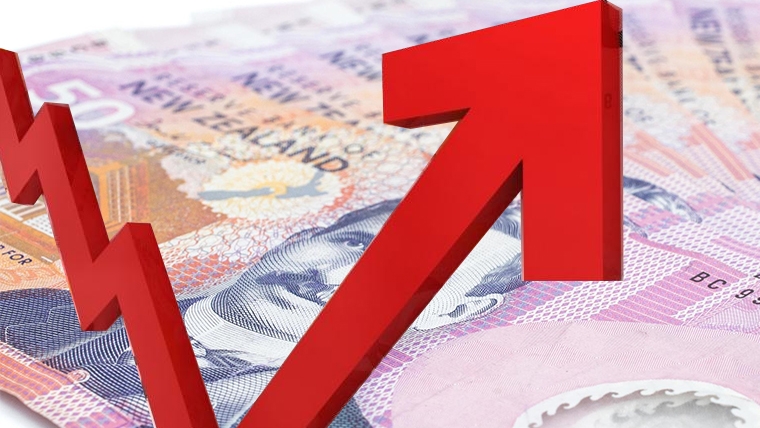
The new week began with market focus on the Middle East, amidst the fourth day of missiles firing between Israel and Iran. With Israel’s aerial attack dominating, the conflict not spreading to include other countries, and oil infrastructure not targeted, the market has already adopted a sanguine view and risk assets have recovered.
The WSJ reported Iran has been urgently signalling that it seeks an end to hostilities and resumption of talks over its nuclear programs, sending messages to Israel and the US via Arab intermediaries. Separately, Reuters reported the message was conveyed through Qatar, Saudi Arabia and Oman. Tehran told officials it would be open to returning to the negotiating table as long as the US doesn’t join the attack. The story went on to say that Iran also passed messages to Israel saying it is in the interest of both sides to keep the violence contained.
When asked about the WSJ report, President Trump agreed and added “they’d like to talk, but they should have done that before.…I would say that Iran is not winning this war”. Officially, Iran is not trying to show weakness, with Iran’s President reaffirming that his country will respond to Israel’s ongoing strikes with proportional retaliation and saying, “we do not seek to escalate the conflict, but we will respond to any attack on Iranian soil in a manner that will make them regret it”.
Oil prices opened the week stronger, with Brent crude trading back above USD78 per barrel, before grinding lower through the Asian session. It dropped to a low around USD70.60 in response to the noted WSJ article and has since settled at USD73. For reference, it was trading around USD70 ahead of Israel’s first missile strike on Iran on Friday.
With reduced fear on Middle Eastern developments, global equities are stronger and the S&P500 is currently up around 1%, recovering Friday’s loss. The Euro Stoxx 600 index closed up 0.4%.
US Treasury yields are higher across the curve with a steepening bias. The 10-year rate currently trades at 4.44%, up 5bps from Friday’s close but less than 2bps higher from the NZ close. Bank of America strategists published a note citing NY Fed custody data which suggest central banks have been selling Treasuries since March, to the tune of $48b, and another $15b via the Fed’s reverse repo agreement facility. This suggests diversification away from dollar assets, which is unusual as central banks normally buy Treasuries when the USD is weak.
The economic calendar has been light. The first of the Fed’s regional manufacturing indices for June was released, with the NY Fed’s Empire State manufacturing index falling nearly 7pts to -16.0, against market expectations for a modest rebound. Yesterday, China activity data for May were a mixed bag. On the bright side, retail sales rose 6.4% y/y, the fastest pace in nearly 18-months, supported by cash subsidies for the government’s consumer goods trade-in programme and more online sales promotions. Both industrial production and investment came in slightly weaker than expected.
In currency markets, the recovery in risk appetite has seen the NZD and AUD outperforming, reversing Friday’s underperformance. The NZD grinded higher soon after the local close and traded at a fresh 2025 high of 0.6088 overnight and is currently up 0.9% since last week’s close near 0.6070. The AUD also traded at a fresh 2025 high, taking a peek just above 0.6550. NZD/AUD has been range-bound and sits at 0.9285.
Safe havens JPY and CHF have underperformed. NZD/JPY is up 1.2% from last week’s close to 87.7. NZD outperformance also sees the NZD stronger on the other key crosses in the order of 0.6-0.8%.
In the domestic rates market, yields were marked higher across the curve, playing catch-up to the move in US Treasuries Friday night. Curves were steeper, with short-end NZGB yields up 3-4bps and longer-term rates up 7-8bps. The 2-year swap rate rose 3bps to 3.30% and the 10-year rate rose 8bps to 4.17%.
There was no market reaction to another weak NZ data print, with the performance of services index lurching down 4.1pts to 44.0 in May, following the sharp drop in the PMI on Friday. At face value, the composite index would be consistent with a move back to economic recession, but it would be rash to jump to this conclusion. Ironically, Q1 GDP data to be released later this week are expected to show another decent clip of 0.7% q/q. But weakness in Q2 activity indicators to date suggest a question mark over the current pace of growth, and will give the RBNZ food for thought on its next policy move in July – whether to pause or not – with higher inflation added to the mix.
On the economic calendar today, NZ monthly pricing indicators for May will help firm up our Q2 CPI estimate, which already sees annual inflation climbing to 2.8%. The BoJ is expected to keep policy unchanged, given heightened uncertainty, with focus being on whether it decides to taper its future bond purchases at a slower pace. US sales data tonight are expected to show a fall in headline sales in May, but 0.3% m/m growth in core sales.

We welcome your comments below. If you are not already registered, please register to comment.
Remember we welcome robust, respectful and insightful debate. We don't welcome abusive or defamatory comments and will de-register those repeatedly making such comments. Our current comment policy is here.